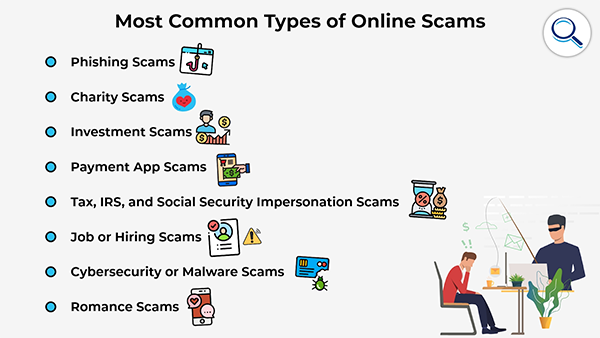Digital literacy enables a person to distinguish different kinds of threats that are on the web and helps them take precautions that can save them and their loved ones.
KEY TAKEAWAYS
- Digital literacy is crucial for both kids and adults so they can protect themselves from various threats.
- Excessive screen time has both mental and physical disadvantages.
- Staying calm in an emergency can help make better decisions and react accordingly.
- Being able to treat wounds and fractures before help arrives always comes in handy.
- Digital literacy and first aid training are equally crucial for families.

Digital literacy has become more important than it ever was. Over 60% of people, that is 5.55 billion people, use the internet, and 196 million new users are recorded every year. There are a lot of scams and unethical practices done on the web, and the kids need to be aware of them.
Apart from digital literacy, first aid training is equally important as nobody knows when something might happen to our loved ones, and before help could arrive, a few things can be done to keep the situation under control.
In this article, I’ll mention the importance of digital literacy and first aid training for families. Read this carefully as it is going to be very beneficial for everyone. Let’s get started.
Digital literacy matters for families, and here are a few reasons why:
Since the use of the internet has become so common, scammers have come up with new digitalized ways to scam people. Unintentionally, we can become victims; kids and adults are equally exposed to it.
All the sensitive information and access to bank accounts can be given to a person by simply clicking on a link. That’s why it’s important to educate your off springs and yourself. Don’t visit Unknown sites or open suspicious links. Don’t fall for things that look too good to be true. Below, you can see the most common types of online scams.

Social media has become a major part of everyone’s lives; likes and comments have started to matter more than anything else, and it’s very addictive. While social media platforms might look harmless, things like cyberbullying, pedophilia, and whatnot have become a major issue.
Kids can easily become victims of online harassments that can make them take steps that could end their lives, and pedophiles are always in search of new victims and can easily lure them into doing things they shouldn’t. Parents need to ensure the online safety of their kids.
So, keep tabs on what they are doing and check up on them regularly to see if anything seems off.
Excessive screen time is never been good. It has both psychological and physical disadvantages. It stops the brain from developing, makes children aggressive, and their eyesight becomes weaker.
They will stop enjoying going out or playing with friends, It’s crucial to not give kids a phone at a very young age and let them enjoy other activities, like playing sports, participating in art & crafts, etc. Adults should be a role model for them and should also limit their screen time.

Strengthening cybersecurity is not quantum physics, and by simply doing a few things, you can protect your family from numerous threats. Creating strong passwords, enabling two-factor authentication, and keeping software updated is enough.
But, make sure to convey a proper message to little ones to not share any private information with others or surf through online web pages.
Being able to perform basic first aid assistance is always going to come in handy, especially in family emergencies. Here’s why:
Suppose your kid fell on the ground and is bleeding; parents will treat the wound with sanitizer and cover it. After that, they take their child to the hospital; this has already reduced the chances of the wound getting infected and has stopped the blood flow.
These things should be known by everyone, such as how to treat a wound, scar, or burn. In cases of severe emergencies where someone has broken a bone, things can be done instead of waiting for help to arrive, so learn about it.

It’s common to choke on anything, whether it’s food or any object; the same goes for cardiac arrest, and both of these need to be treated immediately as they could potentially end someone’s life.
In such situations, CPR can be quite useful, and it isn’t that hard to learn. It only requests some training that can be obtained by participating in the Coast2Coast First Aid Kitchener training program.
Confidence plays a crucial role in case of emergencies; if a person can maintain a calm composure when something happens, they can take the right steps to neutralize the situation. Children should be educated on this from the start so they can take care of themselves and those around them.
Home is the safest and most dangerous place for the kids. You heard me right, our houses are equipped with electricity, fire and sharp objects which can cause fatal accidents.
Houses need to be childproof to avoid such hazards, and children should be under strict supervision and proper knowledge should be given to them so they don’t do anything reckless.

Digital safety and first aid assistance should be practiced side by side for a holistic approach. Parents should enroll themselves and their offspring in courses like Coast2Coast First Aid Kitchener so they have a better understanding of different things.
It can also be turned into a family activity where you can participate in first aid training with everyone and learn how to react in any specific situation. Safety guidelines/restrictions should also be applied to internet usage, and it needs to be tracked from time to time.
Internet is essential for us, it is very useful but does have its downsides. Understanding the risks and threats that come with its use is essential, as nobody wants to become a victim of cybercrime or put their children’s mental state at stake.
At the same time, first aid assistance holds equal importance. Waiting for help to arrive can turn out to be fatal, and if you are aware of what can be done, it can be life-saving. Children and parents both need to participate in courses that give them proper guidance on the subject. Stay safe!
Digital literacy enables a person to distinguish different kinds of threats that are on the web and helps them take precautions that can save them and their loved ones.
CPR is considered to be a must in first aid training. It can redeem someone’s life and can be learned easily, making it an essential skill.
Children can gain knowledge on how to deal with any medical emergency and what steps they can take to ensure that the other person is fine, making it a vital part of education.
